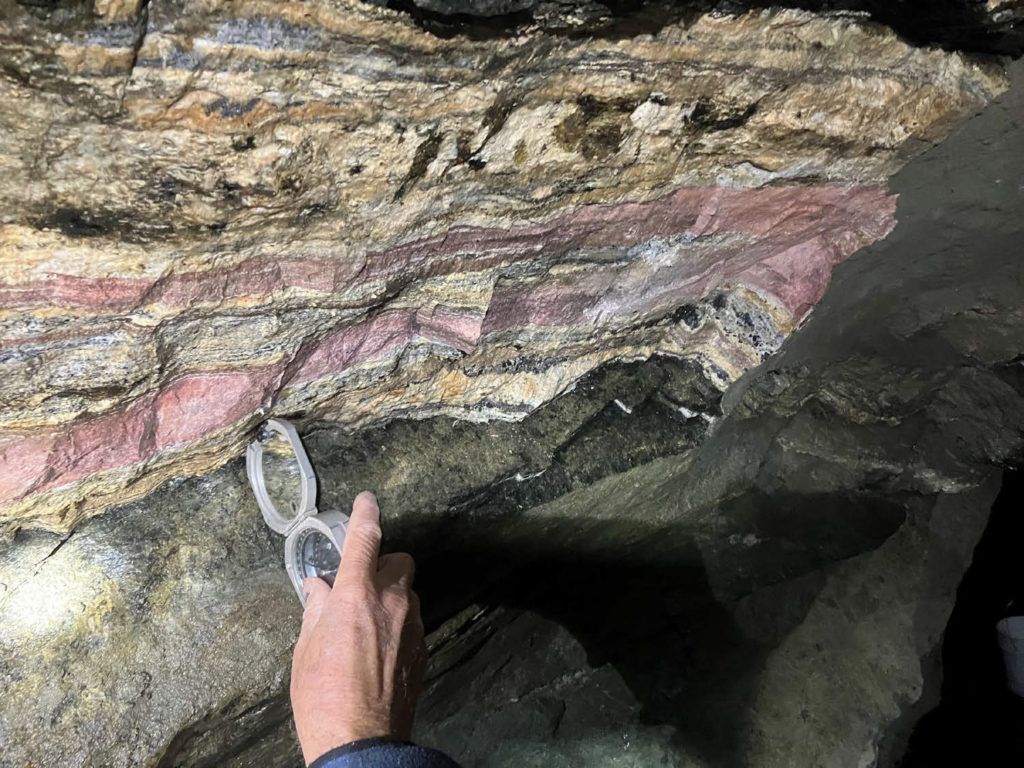Latest lab results show high grades extend to depth at REE property in SW Montana.
Assay results confirm that high-grade rare earth mineralization identified on the surface at US Critical Materials Corp.’s Sheep Creek project in southwestern Montana continues underground.

In early February, the company reported that 52 Sheep Creek surface samples tested by Activation Labs, a Canadian analytical laboratory renowned for its rare earth analysis, returned an average grade of 9% total rare earth oxides, with individual samples containing as much as 21.7% TREO.
Further details from this analysis can be read at Kingly rare earth grades at Sheep Creek in the February 1, 2023 edition of Metal Tech News.
The latest batch of results was collected from two underground adits, or underground mining passages, historically dug 125 feet below the surface during 1960s-era niobium exploration by Continental Columbium Company.
While rare earths were identified during Continental’s investigation of Sheep Creek, at that time there was virtually no market for this enigmatic group of elements that are now in high demand for their uses in electric vehicles and a multitude of other high-tech and industrial applications.
In October, US Rare Materials unsealed two of the three adits historically dug by Continental to trace the abundant critical minerals enriched carbonatites found on surface.
Assays from underground sampling completed last November returned grades topping 10% TREO. This includes high concentrations of neodymium and praseodymium, a pair of rare earths used in the powerful magnets that go into EV motors, wind turbines, and a wide range of other high-tech devices and consumer goods. Samples with as much as 1.4% combined neodymium and praseodymium were collected, according to the recent assays from Activation Labs.
The same rocks that host high rare earth grades are also enriched with niobium, scandium, and yttrium – all considered critical to the economic well-being and national security of the U.S.
Another surprising advantage of the Sheep Creek rare earth mineralization is the unusually low levels of thorium, a radioactive element often associated with rare earths deposits that require special permitting and disposal protocols in the U.S. if levels exceed 500 parts per million.
The levels of thorium at Sheep Creek have been found to average around 200 ppm, which is significantly below the permitting threshold established by the Nuclear Regulatory Commission.
“The combination of high-grade rare earths, low thorium, and carbonatites 125 feet below surface is a geological phenomenon that does not exist in other reported U.S. deposits,” said Jim Hedrick, president of US Critical Materials and former rare earth commodity specialist for the U.S. Geological Survey. “Over the course of my career independently evaluating rare earth properties within the U.S., I have never encountered a property with the grades being generated by Sheep Creek.”
US Critical Materials’ goal is to quickly advance Sheep Creek in order to provide a domestic source of rare earths that can help break America’s current reliance on China for more than 80% of its needs for this group of elements critical to technology, manufacturing, and national defense.
“I firmly believe that this project will continue to produce exceptional results and further our objective of opening a new district scale rare earth destination to address the critical rare earth needs of US industry and government,” Hedrick added.
Also Published on MetalTech News: Deeper Look At Sheep Creek Rare Earths
